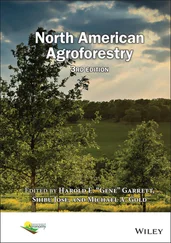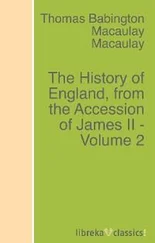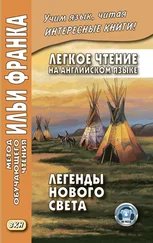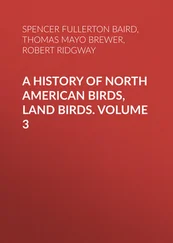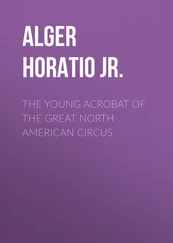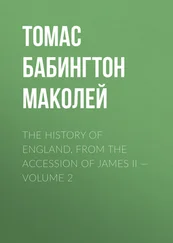Robert Ridgway - A History of North American Birds, Land Birds. Volume 1
Здесь есть возможность читать онлайн «Robert Ridgway - A History of North American Birds, Land Birds. Volume 1» — ознакомительный отрывок электронной книги совершенно бесплатно, а после прочтения отрывка купить полную версию. В некоторых случаях можно слушать аудио, скачать через торрент в формате fb2 и присутствует краткое содержание. Жанр: foreign_antique, Биология, foreign_edu, на английском языке. Описание произведения, (предисловие) а так же отзывы посетителей доступны на портале библиотеки ЛибКат.
- Название:A History of North American Birds, Land Birds. Volume 1
- Автор:
- Жанр:
- Год:неизвестен
- ISBN:нет данных
- Рейтинг книги:3 / 5. Голосов: 1
-
Избранное:Добавить в избранное
- Отзывы:
-
Ваша оценка:
- 60
- 1
- 2
- 3
- 4
- 5
A History of North American Birds, Land Birds. Volume 1: краткое содержание, описание и аннотация
Предлагаем к чтению аннотацию, описание, краткое содержание или предисловие (зависит от того, что написал сам автор книги «A History of North American Birds, Land Birds. Volume 1»). Если вы не нашли необходимую информацию о книге — напишите в комментариях, мы постараемся отыскать её.
A History of North American Birds, Land Birds. Volume 1 — читать онлайн ознакомительный отрывок
Ниже представлен текст книги, разбитый по страницам. Система сохранения места последней прочитанной страницы, позволяет с удобством читать онлайн бесплатно книгу «A History of North American Birds, Land Birds. Volume 1», без необходимости каждый раз заново искать на чём Вы остановились. Поставьте закладку, и сможете в любой момент перейти на страницу, на которой закончили чтение.
Интервал:
Закладка:
A. Turdinæ.—Tarsus covered anteriorly with a continuous plate without scales.
Wings decidedly longer than the tail, which is nearly even. Bill considerably shorter than the head.
First quill usually not one fourth the second. Wings pointed. Tarsus hardly the length of head, but yet longer than middle toe; outstretched toes falling short of tip of tail … Turdus.
B. Miminæ.—Tarsi scutellate anteriorly; scales seven.
Wings decidedly longer than the tail, which is nearly even. Tarsus as long as the head.
Bill decidedly shorter than the head, scarcely notched; wings pointed; first quill less than half the second, third and fourth longest. Claws not peculiar. Bristles prominent. Tarsus considerably longer than middle toe and claw … Oreoscoptes.
Wings decidedly shorter than the tail, which is considerably graduated; first quill half or more than half the second.
Bill notched at tip, shorter than head; straight.
Scutellæ very distinct; gonys straight, or even declining at tip … Mimus.
Scutellæ more or less obsolete; gonys convex, ascending at tip … Galeoscoptes.
Bill not notched at tip, lengthened; sometimes much decurved … Harporhynchus.
Note.—In the Review of American Birds, I., May, 1866, 409, I have advanced the suggestion that the N. American genus Myiadestes , usually placed under the Ampelidæ , really belongs under Turdidæ in a group Myiadestinæ . The relationships are certainly very close, as is shown by the characters given below.
Common Characters.—Tarsi without regular transverse scutellæ, except at lower end. Wings acute, pointed, as long as or longer than tail, which is but slightly graduated. First primary rarely half second, which exceeds the secondaries. Base of quills buffy yellow, as are inner edges. Tail spotted or varied at the end. Young birds with many light spots. Very melodious singers.
Myiadestinæ.Bill short, much depressed; mouth deeply cleft; width at base about equal to the distance from nostril to tip, or greater; commissure more than twice distance from nostrils to tip of bill, and nearly two and a half times length of gonys. Legs weak; tarsi rather longer than middle toe and claw. Tail feathers tapering slightly from base to near tip, giving a slightly cuneate appearance to the tail.
Turdinæ.Bill stouter, more lengthened; narrow at base and more compressed; width at base less than distance from nostril to tip; commissure not more than twice distance from nostrils to tip of bill, and about twice length of gonys. Tarsi stouter, longer than middle toe and claw. Tail feathers widening slightly from base to near tip, giving a parallel-sided or slightly fan-shaped appearance to the tail.
The Miminæ differ, as already mentioned, in the scutellate tarsi: more rounded wings, etc.—S. F. B.
Subfamily TURDINÆ
There are several American genera of Turdinæ not found north of Mexico as yet, although it is not impossible that one of these ( Catharus ) may hereafter be detected within the limits of the United States. The species of Catharus resemble the North American wood-thrushes ( Hylocichla ); but the spurious or first primary quill is longer (from one half to one third the second quill), the wings are rounded, not pointed, the tarsus is longer than the head, and the outstretched toes extend beyond the tail. The species to be looked for are C. melpomene and occidentalis . 22 22 See Baird, Review American Birds, I, 1864, 7, 8.
The North American species of Turdinæ , while retained under the single genus Turdus , yet constitute several distinct groups, which we may call subgenera.
Turdus , Linnæus, Syst. Nat., ed. 10, 1758, 168. (Type, Turdus viscivorus of Europe.)—Baird, Rev. Am. Birds.
Gen. Char. Bill conical, subulate, shorter than the head; the tip gently decurved and notched (except in Hesperocichla ); the rictus with moderate bristles; the wings rather long and pointed, with small first primary (less than one fourth the second); wings considerably longer than the tail, which is firm, nearly even, with broad feathers. Tarsi variable, seldom as long as the skull, the scutellæ fused into a continuous plate, only in rare individual instances showing indications of the lines of separation.
The genus Turdus is very cosmopolitan, occurring nearly throughout the globe, excepting in Australia , and embraces species of highest perfection as singers. In the large number of species known there are many variations in external form, but the transition from one to the other is so gradual as to render it very difficult to separate them into different genera. The sections of the group we adopt are the following:—
Hylocichla.Smallest species. Bill short, broad at base; much depressed. Tarsi long and slender, longer than middle toe and claw, by the additional length of the claw; outstretched legs reaching nearly to tip of tail. Body slender. Color: above olivaceous or reddish, beneath whitish; breast spotted; throat without spots.
Turdus.Bill stouter and higher. Tarsi stout and short, scarcely longer than middle toe and claw. Body stout, generally whitish beneath and spotted. (Second quill longer than fifth?)
Planesticus.Similar to preceding. (Second quill shorter than fifth?) Beneath mostly uni-colored; unstreaked except the throat, which is whitish with dark streaks.
Merula.Similar to Turdus . Male usually more or less black, especially on the head; females brownish, often with streaked throats. Bill distinctly notched.
Hesperocichla.Similar to Turdus . Male reddish beneath, with a black collar. Bill without notch.
Hylocichla , Baird (s. g.), Rev. Am. Birds, 1864, 12. (Type, Turdus mustelinus .)
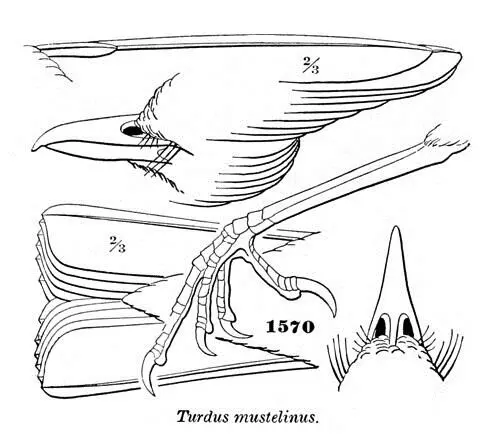
Turdus mustelinus.
1570
The essential characters of Hylocichla have already been given. The subgenus includes the small North American species, with Turdus mustelinus , Gm., at the head as type, which are closely connected on the one side with Catharus , by their lengthened tarsi, and with Turdus by the shape of the wing. The bills are shorter, more depressed, and broader at base than in typical Turdus , so much so that the species have frequently been described under Muscicapa .
It is not at all improbable that naturalists may ultimately conclude to consider the group as of generic rank.
In this group there appears to be five well-marked forms or “species.” They are, mustelinus , Gm., pallasi , Caban., fuscescens , Steph., swainsoni , Caban., and aliciæ , Baird. The first-named is totally unlike the rest, which are more closely related in appearance.
In studying carefully a very large series of specimens of all the species, the following facts become evident:—
1. In autumn and winter the “olive” color of the plumage assumes a browner cast than at other seasons; this variation, however, is the same in all the species (and varieties), so that in autumn and winter the several species differ from each other as much as they do in spring and summer.
Читать дальшеИнтервал:
Закладка:
Похожие книги на «A History of North American Birds, Land Birds. Volume 1»
Представляем Вашему вниманию похожие книги на «A History of North American Birds, Land Birds. Volume 1» списком для выбора. Мы отобрали схожую по названию и смыслу литературу в надежде предоставить читателям больше вариантов отыскать новые, интересные, ещё непрочитанные произведения.
Обсуждение, отзывы о книге «A History of North American Birds, Land Birds. Volume 1» и просто собственные мнения читателей. Оставьте ваши комментарии, напишите, что Вы думаете о произведении, его смысле или главных героях. Укажите что конкретно понравилось, а что нет, и почему Вы так считаете.


